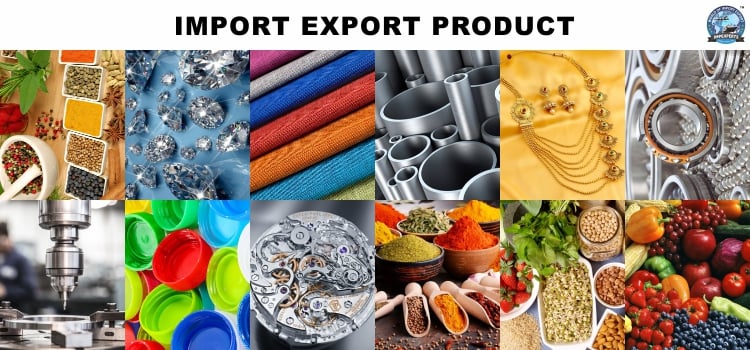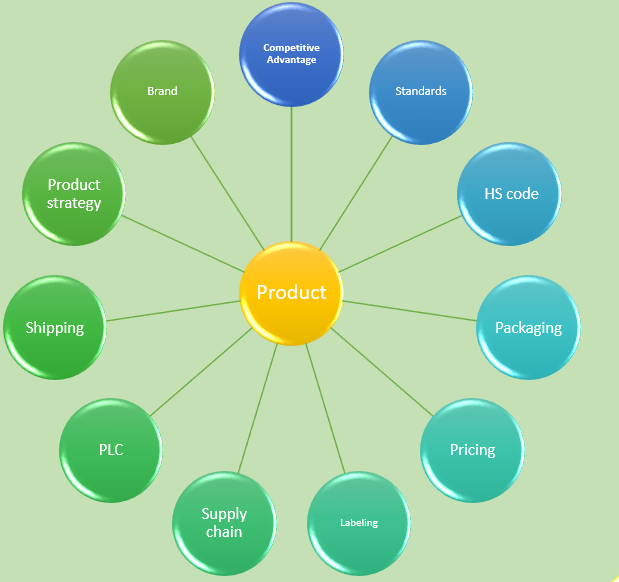
Clear and achievable export goals, unique business ideas, knowledge of success factors in international markets, dealing with the additional demands associated with exporting, management commitment; multilingual human resources in marketing are one of the prerequisites for export success.
.
Acquiring export skill and Knowledge
Exporting is an activity that requires resource and capacity management to deliver a product or service that can be offered on a global scale. Therefore, it is necessary to acquire knowledge about exporting. Those exporters who acquire the necessary knowledge about exporting and use this knowledge achieve better results. Nowadays, it is not very difficult to acquire export knowledge, especially for newcomers in the export business, as this knowledge is available through various sources, especially the World Wide Web and the government websites and private sector.
Proper selection of products for export
How to decide which products to export and how to find the right product for export?
.

.
Determining your target market is correct when the benefits and product features are analyzed. The product or service being considered for export must have the potential to compete in the target market.
The factors to consider for an export product should be reviewed. What does specialized customer service and support look like? The distribution channels for the product in the target market should be reviewed, and most importantly, what competitive advantage does the product have over other competitors in the target market?
What labels and signs can be used? Labeling regulations vary widely from country to country. Therefore, check which labels are required before shipping. If labels do not meet local requirements, such as product weight or electrical standards, your product may not be allowed through customs. Labeling distinguishes exported goods from those of other exporters. Marking distinguishes your goods from those of other shippers. The marking on the shipping container must match that on the bill of lading or other shipping document; it may include some or all of the following information.
.

.
Product evaluation checklist
– Who is the consumer of the product or service?
– Is the product or service widely available or limited to a specific group?
– Does the product or service appeal to customers in specific age groups?
– Are there other significant demographic patterns of use?
– What climatic or geographic conditions affect use of the product or service?
– What changes are needed to make the product more attractive to foreign customers?
– What is the shelf life of the product? Will the product’s shelf life be affected by shipping?
– Can the packaging be easily modified to meet the requirements of foreign customers?
– What documents are required? For example, does the product have technical regulations and standards?
– How is the product shipped?
– Do shipping costs affect pricing?
– How much does the target market handle incoming shipments?
– Are special packaging materials/containers required?
– Is a marketer/vendor or local representative needed?
– Do the products require professional assembly or other technical skills?
– What customer service is required? Do you have the appropriate resources?
– What is special about the product service?
– Do services need to be customized to accommodate differences in language, culture, and business environment?
– Is it possible to serve existing internal customers as well as new external customers?
– Can we still export as domestic demand increases?
– What is the supply chain of export goods and what are its strengths and weaknesses?
– Is branding important for your product?
Harmonized System (HS) Codes
Among classification systems for industry, Harmonized System (HS) codes are commonly used in the export process of goods. The Harmonized System is a standardized numerical method for classifying traded products. It is used by customs authorities around the world to identify products when assessing duties and taxes and to compile statistics.
The HS is administered by the World Customs Organization (WCO) and updated every five years. Specific six-digit codes are assigned to various classifications and commodities at HS. Countries may append longer codes to the first six digits for further classification.
How do I find the HS code for a commodity?
Movie
Market research and export statistics help us select products for export.
Use of marketing tools
After selecting the product to be exported, various marketing tools should be used at each step of the export process to ensure business success. Below is a list of tools and tips to help you get started.
Business card
The main purpose of a business card is to help customers remember your company so they can contact you. A good business card has the following characteristics.
– Professional and high quality design
– Easy to read
– Design in the best language(s).
– Unique and attractive
– Updated and complete, including area code, country, phone and fax numbers, zip code, email and website address
.

.
Brochure
A brochure is a marketing tool used by a company to advertise a product or service. It is a tool used to disseminate information about the product or service, and it is distributed in a variety of ways. The brochure should have the following characteristics:
– Creative and attractive
– Appropriate content
– Easy to read, relevant to the product and the company
– Professional design and printing
– Visually appealing
– Has a digital version
.
Catalog
Expanding your e-commerce business to additional regions and countries offers countless opportunities for retailers and manufacturers alike. New markets mean new customers and the potential for business growth. But sometimes simple issues make exporting difficult because they are ignored.
One of these obstacles is the need to prepare your product catalogs to meet the requirements of international marketplaces and distribution channels. Depending on the market you enter, your product information will not only need to be translated for your new customers, with local currencies and measurements, but also provided in a new format.
There are differences between the product catalogs required in different countries. Depending on which sector your products belong to, some industries have different catalog and information standards depending on the region or country.
This may depend on the number of regulatory requirements that apply to commerce in each country, as well as the industry standards for product marketing in that country. Therefore, it’s a smart idea to consolidate and enrich your content to create a more advanced catalog. So, if you are planning to make a sale, you’ll need to adapt your catalog to specific formats to provide the appropriate information.
.

.
Website
A website is one of the most important tools in your marketing toolkit, and for that reason, managing content for the web is a priority. Professional exporters are usually active in global markets by creating websites and multilingual content, and they also take advantage of the opportunities offered by the digital world. Foreign customers can access all information with a simple search, and the first information they receive from an exporter is its website. The website for export must be comprehensive:
– The website should be comprehensive and provide complete information about the product and the company
– Appropriate and managed content
– Multilingual content, especially in the language of the target market
– Professional design
– Easy to search
– Visually appealing
– Timeliness and reliability
– Online inquiries (via forms or e-mail)
– Possibility of online purchase (if desired)
.

.
Testimonials
Customer testimonials are written or filmed statements from current or former customers describing their use of a product or service and the benefits, performance, quality and/or value they experienced.
– It should be presented in a way that recommends your business
– Represent the best customers
– Quotes from senior executives
– Include in brochure and post on website
.
Email Newsletters
Email newsletters are online messages sent to business partners, subscribers and potential customers. Newsletters can be created for free and contain important information about the company, upcoming events or industry news.
Newsletters provide the audience with more in-depth information than advertisements. This is especially important when educating consumers about products or services. When customers fully understand the many benefits of your products and services, they are more likely to make a purchase. Newsletters have a longer shelf life than ads and are more likely to be read by multiple people. Newsletters can be used to attract new customers, increase repeat business from existing customers, enhance your company’s reputation as an industry leader, and streamline customer communications. However, a customer newsletter is only effective if it is carefully planned and looks professional.
.
Video Marketing
Video marketing means using videos to promote and inform about your product or service. It helps increase engagement on your digital and social channels, informs your audience, and allows you to reach them through a new medium.
Exchanging capital, goods and services in international markets is difficult. Companies offer solutions by helping to create efficient networks and platforms between sellers and buyers on a national and global scale. Creating eye-catching videos to promote your product can help grow your export business. Videos should be included:
– Be complex and interesting.
– They should be professionally translated and have content.
– Show the quality and benefits of the product or service.
– Be clear and short.
– Be easily available on YouTube, Twitter and other social media channels.
.

.
Social networks
Due to the exponential growth of social media users, businesses have shifted from traditional communication channels such as television to digital channels, especially social networks. In global markets, there may be restrictions on some specific platforms due to regulations and sanctions, which should be considered at the beginning of the export marketing plan. For example, Facebook, Twitter, Instagram and YouTube are banned in China. However, the Weibo platform is a very popular microblogging service. The following actions are necessary for social media marketing:
– Creating accounts on social media such as: Facebook, LinkedIn, Twitter, etc. and online review sites
– Locate social media that are used in the target market.
– Know how the selected social media works
– Understand how search engines display search queries for your product
– Analyze social media to learn more about target audiences and comments.
– Be prepared to respond to customer complaints.
.
Export documents and licenses
Export requirements include knowing what documents are required for export and obtaining the necessary permits. Documents such as proforma, packing list, certificate of origin, bill of lading, warehouse, etc. and licenses such as trade cards, standard certificates, health and quarantine certificates, etc.
